Ganoderma | Fungal Disease

Prevention is key to preventing your trees from getting Ganoderma. Ganoderma, like Kretzschmaria, is present in the soil, and infects a tree when its roots become damaged and lose their protective bark.
Ganoderma Red Flags
- Conks on a tree
- Ear-shaped growths
- Reddish mushrooms
- Orange conks
- Leaf yellowing
- Wilting
- Dieback
- Bracket-like fungal growths
- Red fungus
What is Ganoderma?
Ganoderma is a genus of wood-decaying fungi known for causing significant tree diseases. These fungi are notorious for their role in both ecological roles and as pathogens affecting trees globally. With over 200 species, Ganoderma fungi can be found in various climates and environments, from tropical regions to temperate forests.
Ganoderma, like Kretzschmaria, is present in the soil, and infects a tree when its roots become damaged and lose their protective bark. While Ganoderma is similarly untreatable, it can be easier to detect in its early stages and may be able to be managed, avoiding immediate removal. Root zone excavation can also be helpful in determining the extent of damage.




How a Texas Tree Surgeons ISA Certified Arborist Diagnosis Ganoderma
While the different species vary in appearance, the ones commonly seen in North Texas generally mature into ear-shaped growths called “conks.” The conks may appear on a tree trunk, near the base, or even grow right out of the ground. The conks begin as white- or light-colored, but darken into dark orange or brown with a shiny appearance on top.
Infected trees may also exhibit symptoms such as leaf yellowing and wilting, dieback of branches, and a general decrease in growth rate. The canopy may appear thinned out as the disease progresses, due to the tree’s inability to transport the necessary nutrients efficiently.
How Texas Tree Surgeons Treats Ganoderma
Management of existing infections involves consulting with a certified arborist who can properly assess the extent of the disease and recommend appropriate action. This may include pruning infected areas, enhancing soil conditions through methods such as air spading, and improving aeration around the affected root zone
What can Homeowners do to help their trees with Ganoderma?
Regular monitoring of tree health plays a crucial role in the early detection of Ganoderma infections. By having an arborist routinely inspect your trees, particularly after storms or heavy rainfall, they will notice early signs of fungal infections before they become a severe threat.
Tree health monitoring is also essential in maintaining the ecological balance of the surrounding environment. Addressing tree health proactively can prevent the spread of Ganoderma to neighboring plants and contribute to a healthier urban forest environment.
What Will Happen to my Tree with Ganoderma?
Ganoderma primarily affects trees by colonizing their trunk and roots, leading to a decay that compromises the tree’s structural stability. This leads to weakened structural integrity, making trees more susceptible to toppling in strong winds or storms.
To avoid unnecessary damage or injury to people we recommend removing large trees that exhibit Ganoderma on the lower trunk or exposed root areas. Consult a certified arborist for removal.
What species are Texas Tree Surgeons arborists seeing this effect?
- Oaks
- Elms
- Maple

Weakened trees are more susceptible to disease, insects, and fungal infections. But don’t be alarmed, not all visible fungi are a hazard. Fungi in the genus Laetiporus (such as sulfur shelf or chicken of the woods mushrooms) can live on a tree trunk for years without harming the tree. If you are unsure of the type of mushroom growing on your tree don’t wait till it’s too late. Call today to schedule a consultation for an Arborist assessment.
Related Blogs
Similar blogs related to this topic


Top 10 Things We'd Tell You as an Arborist if We Weren't Afraid of Hurting Your Feelings
This is a list of tree care worst practices that you, or someone you know may be guilty of. Read the following list at your own risk. You’ve been warned, feelings may get hurt. 1.…
Read more

Avoid These Tree Care Mistakes for a Healthy Landscape
Below is a list of overlooked mistakes that could jeopardize the health of your trees. From missteps in pruning to incorrect watering practices, discover how to give your trees the care they deserve. Red oak…
Read more

Why do Arborists Recommend Soil Sampling in Urban Areas like Dallas?
Soil sampling is a crucial practice in urban areas like Dallas. It helps arborists make informed decisions about your landscape to ensure a healthy urban ecosystem. Our native soils vary widely—from the dense clays of…
Read more
